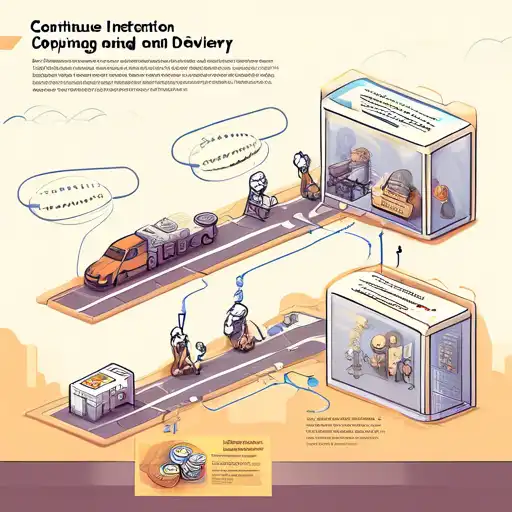What is Continuous Integration and Delivery?
Continuous Integration (CI) and Continuous Delivery (CD) are pivotal practices in modern software development, aimed at improving the speed and quality of software releases. CI/CD automates the integration of code changes from multiple contributors into a single software project, ensuring that the software can be reliably released at any time.
The Benefits of CI/CD
Adopting CI/CD practices offers numerous benefits, including:
- Reduced integration problems
- Faster release rates
- Higher quality software
- Improved developer productivity
By integrating regularly, developers can detect errors quickly, and locate them more easily. Continuous Delivery ensures that the software can be released to production at any time, making the release process efficient and stress-free.
How CI/CD Works
CI/CD pipelines automate the steps in software delivery, such as initiating code builds, running automated tests, and deploying to a production environment. Tools like Jenkins, Travis CI, and GitLab CI play a crucial role in automating these processes.
Key Components of a CI/CD Pipeline
- Version Control: All code changes are committed to a version control system, such as Git.
- Build Automation: Tools compile the code into executable artifacts.
- Test Automation: Automated tests verify the application's functionality.
- Deployment Automation: The application is deployed to production or staging environments automatically.
This automation ensures that every change is tested and ready for production, significantly reducing the chances of human error.
Best Practices for Implementing CI/CD
To maximize the benefits of CI/CD, consider the following best practices:
- Maintain a single source repository.
- Automate the build process.
- Make your build self-testing.
- Ensure every commit is built on an integration machine.
- Keep the build fast.
- Test in a clone of the production environment.
- Make it easy for anyone to get the latest executable version.
- Automate deployment.
Following these practices can help teams achieve a seamless and efficient CI/CD pipeline, leading to faster and more reliable software releases.
Challenges in CI/CD Adoption
While CI/CD offers numerous advantages, organizations may face challenges during adoption, such as:
- Cultural resistance to change
- Integration with legacy systems
- Initial setup and maintenance costs
Overcoming these challenges requires a commitment to continuous improvement and a willingness to invest in the necessary tools and training.
Conclusion
Continuous Integration and Delivery are essential practices for any team looking to improve their software development process. By automating the integration and delivery processes, teams can achieve faster release cycles, higher quality software, and improved developer productivity. Despite the challenges, the benefits of CI/CD make it a worthwhile investment for any software development team.
For more insights into DevOps practices, explore our guide on essential DevOps tools.
